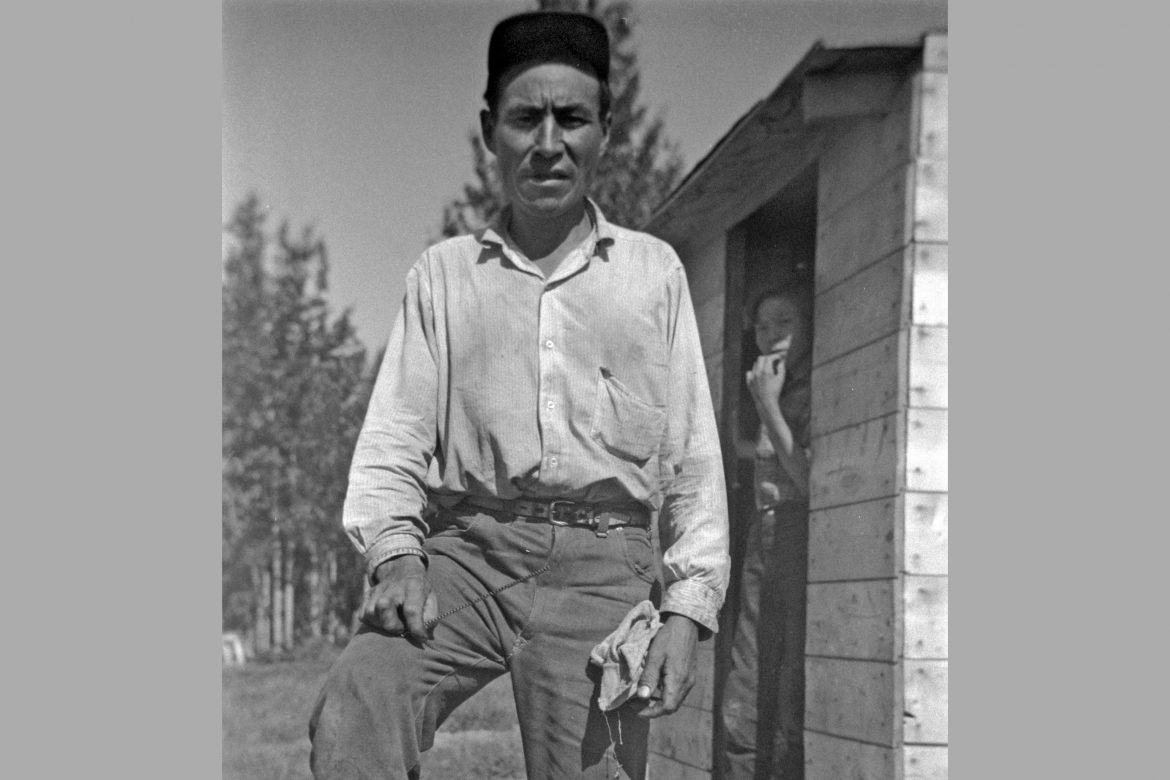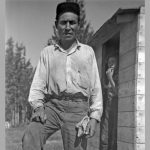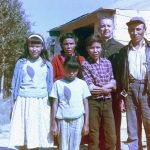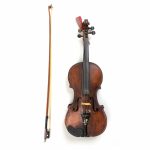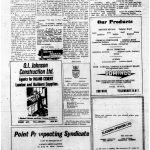1964
John Tetso (Tsetso) ‘Trapping is My Life’
John Tetso was a Dehcho Dene who lived north of Fort Simpson in the Willow Lake River area. Born in 1921, Tetso made a living hunting and trapping, taking occasional wage-earning jobs. An ardent reader and lover of radio broadcasts, Tetso had stories to share and learned to type while working with the government wildlife office in 1953. He wrote his stories on a typewriter with a Webster Giant Illustrated Dictionary so that others might see his life and be inspired to maintain connections to the land.
Tetso wrote articles in the Fort Simpson Catholic church newsletter for several years. In 1964, the stories were gathered in a mimeographed booklet, ‘Trapping is My Life,’ and sold for 10 cents a copy through the Fort Simpson church and Tetso himself. The drawings by John Farcy illustrated the stories. The work gained attention as one of the first Indigenous autobiographical efforts at a time when non-Indigenous perspectives were the only published source about Dene and Inuvialuit ways of life.
The stories told of past adventures of his father and brothers, with keen observations that remind us today of the value of hard work, patience and perseverance. Tetso’s insightful and timeless words evoke images of independence and appreciation for the gifts and challenges that come with living a life on the trapline, “a feeling that defies description swept over me as I stood alone and surveyed the wonders of creation.”
Despite attending only three years of school, Tetso was a talented writer. Initial skepticism over his education level had Fort Simpson’s Father Turcotte visit the Tetso family in the early summer of 1964 and then send a letter to the Yellowknife newspaper, The News of the North, to confirm John’s life story. Tetso himself wrote to the newspaper, clarifying Turcotte’s observations and further impressing his storytelling skills with good humour.
John Tetso died of pneumonia on September 20, 1964. He was 43 years old. He left behind his wife Jane and children Ernest, Florence and Virginia and stories that deserve to be remembered as capturing a moment in the history of the Northwest Territories. In 1970, four years after Tetso’s death, “Trapping is My Life” was picked up by a major publisher and released as a hard-bound book. It has been reprinted four times over the past 50 years.
